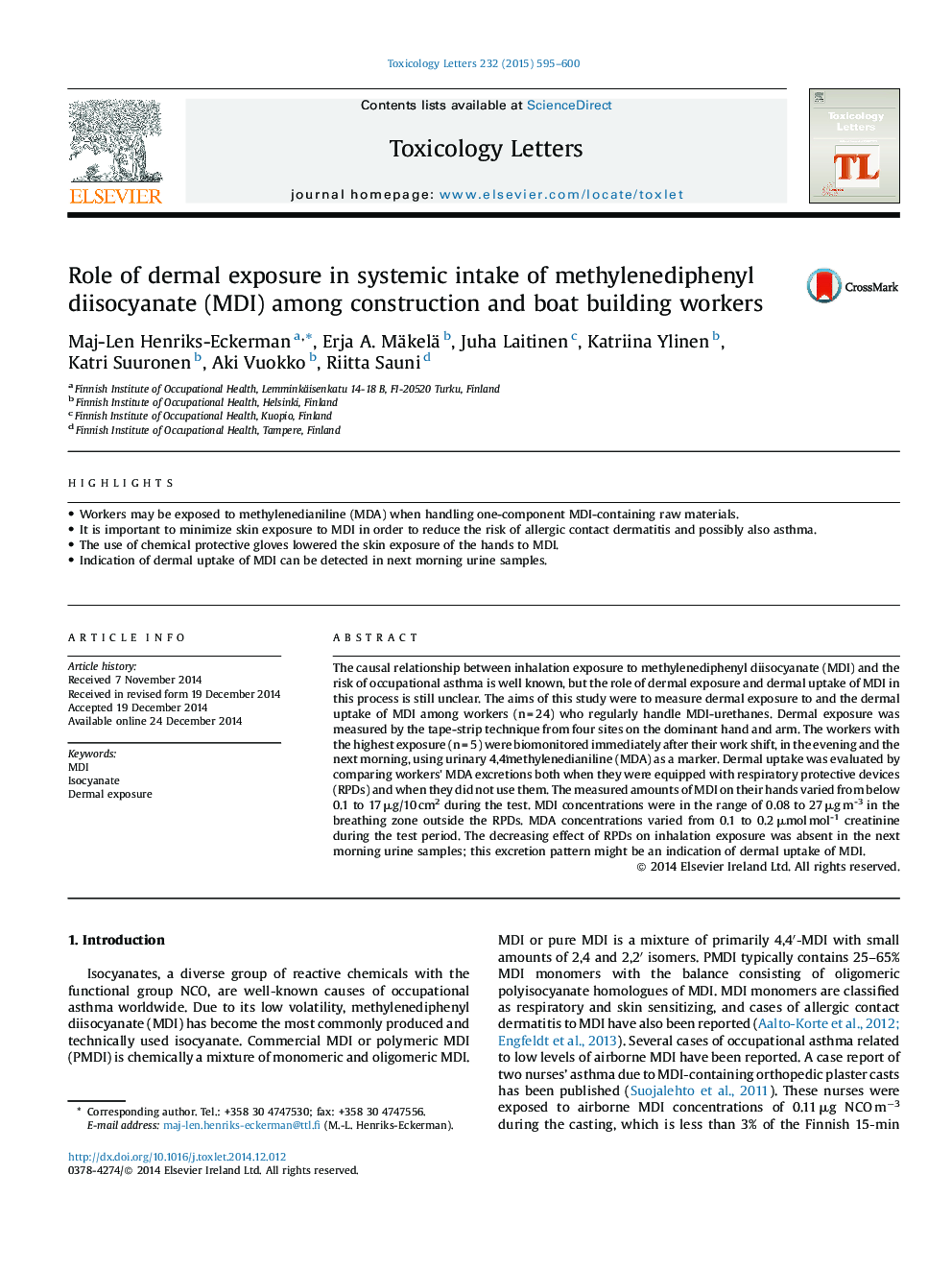| کد مقاله | کد نشریه | سال انتشار | مقاله انگلیسی | نسخه تمام متن |
|---|---|---|---|---|
| 2598871 | 1133155 | 2015 | 6 صفحه PDF | دانلود رایگان |

• Workers may be exposed to methylenedianiline (MDA) when handling one-component MDI-containing raw materials.
• It is important to minimize skin exposure to MDI in order to reduce the risk of allergic contact dermatitis and possibly also asthma.
• The use of chemical protective gloves lowered the skin exposure of the hands to MDI.
• Indication of dermal uptake of MDI can be detected in next morning urine samples.
The causal relationship between inhalation exposure to methylenediphenyl diisocyanate (MDI) and the risk of occupational asthma is well known, but the role of dermal exposure and dermal uptake of MDI in this process is still unclear. The aims of this study were to measure dermal exposure to and the dermal uptake of MDI among workers (n = 24) who regularly handle MDI-urethanes. Dermal exposure was measured by the tape-strip technique from four sites on the dominant hand and arm. The workers with the highest exposure (n = 5) were biomonitored immediately after their work shift, in the evening and the next morning, using urinary 4,4´methylenedianiline (MDA) as a marker. Dermal uptake was evaluated by comparing workers' MDA excretions both when they were equipped with respiratory protective devices (RPDs) and when they did not use them. The measured amounts of MDI on their hands varied from below 0.1 to 17 μg/10 cm2 during the test. MDI concentrations were in the range of 0.08 to 27 μg m-3 in the breathing zone outside the RPDs. MDA concentrations varied from 0.1 to 0.2 μmol mol-1 creatinine during the test period. The decreasing effect of RPDs on inhalation exposure was absent in the next morning urine samples; this excretion pattern might be an indication of dermal uptake of MDI.
Journal: Toxicology Letters - Volume 232, Issue 3, 3 February 2015, Pages 595–600